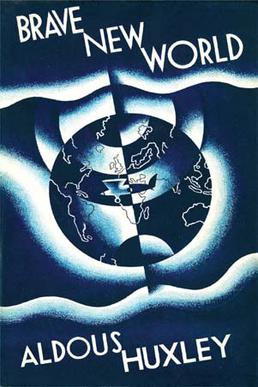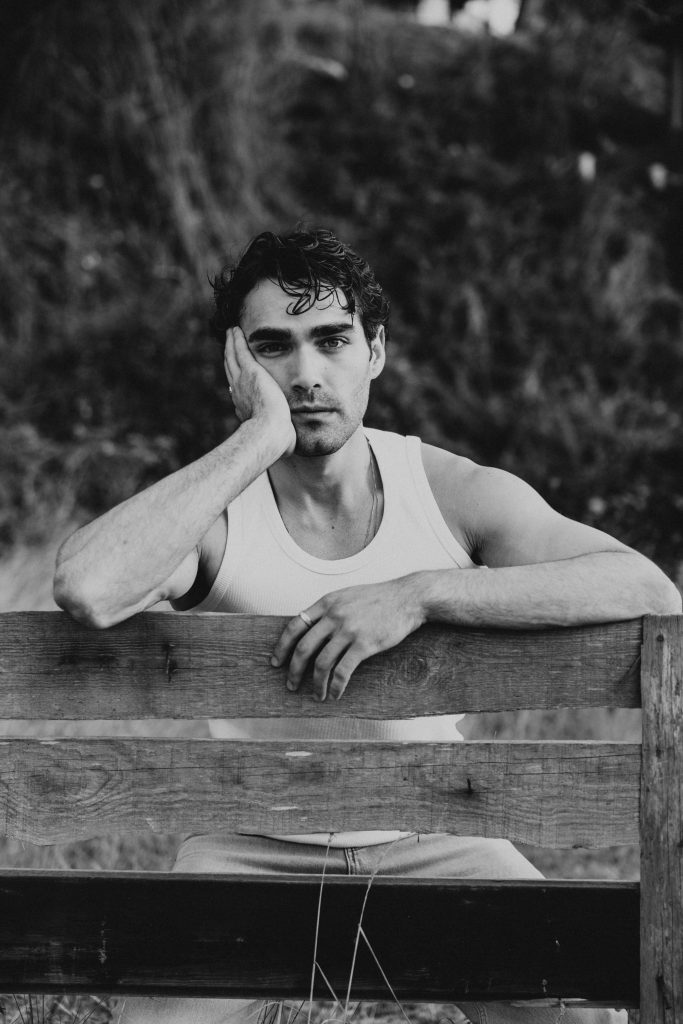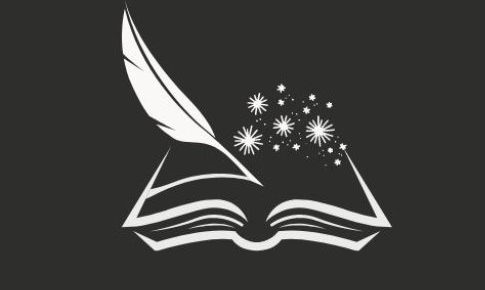Overview
Aldous Huxley’s Brave New World, published in 1932, presents a dystopian vision of a future society in which every aspect of human life is controlled by technology, conditioning, and a strict caste system. In a society set in the future, where natural reproduction is replaced by artificial methods and individuals are conditioned for predetermined roles, the novel delves into themes of individuality, freedom, and the dehumanizing consequences of a highly controlled and pleasure-driven culture.

The friendly greeting
Upon its release, Brave New World received mostly poor reviews. The novel’s philosophical implications were poorly comprehended by the majority of readers, who were offended by the character of Huxley’s future. The book is still on lists of prohibited books, having been banned by many schools and libraries throughout the globe. Parents and instructors believe that the novel’s themes of self-harm, promiscuity, and overall pessimism are not suitable for children since they are considered to be unacceptable behaviors. Another school of thought contends that these concepts are the foundation upon which the novel’s investigation of mankind and its rejection of societal control are built.
The dystopian picture of the book sticks with readers, prompting them to wonder: If there were a paradise devoid of poverty, sickness, and suffering, what would society be lacking? This is true regardless of how the work was received. Maybe the book Brave New World has stayed relevant because of this topic and Huxley’s responses to it.

Synopsis of the story
According to the book, the year AF 632 (2540 CE) is the setting for Brave New World. “AF” means “after Ford,” as the period that started with the introduction of Henry Ford’s Model T and the assembly line that followed it are both held in the highest esteem. The story takes a look at the World State, a society of the future that is very efficient and based on science.
Children are deprived of their emotions and individuality at a young age in this society, and there are no enduring relationships due to the adage that “everyone belongs to everyone else” (a well-known World State axiom). Starting in the Central London Hatchery and Conditioning Centre, where cloning and prenatal creation of children is practiced for the purpose of increasing the population, Huxley provides a detailed account concerning the scientific and compartmentalized character of this society at the beginning of the book.
This world’s class structure is then laid out for the reader, with citizens being divided into different classes as embryos. Embryos are conditioned into certain classes by exposing them to varying concentrations of chemicals and hormones while they are in the incubator or in a tube. The embryos of the upper classes are chemically modified to be flawless in every way, whereas the embryos of the lower classes are modified to be flawed. The classes are Alpha through Epsilon, in descending order of importance. The Epsilon breed is suited for manual work, whereas the Alpha breed is favored for leadership roles.

One of the most significant characters in the narrative is Alpha Bernard Marx. His beloved Lenina Crowne is accompanied by him to a “savage reservation,” which is a location where the indigenous people continue to engage in activities that are considered to be barbaric by the World State. An important figure in the story is Alpha Bernard Marx. He takes his beloved Lenina Crowne to a “savage reservation,” a place where the indigenous people still practice practices that the World State views as savage.
The reserve stands in stark contrast to the highly organized and regulated civilization of the World State, highlighting the novel’s criticism of conventional conventions. Another family the Director said has been located; they meet Linda and John, also known as the Savage, a mother and son. Marx rightly thinks that they are the missing family. After receiving threats from the Director to expel him for his disruptive conduct, Marx chose to take the two home with him.
Marx introduces the Director to Linda and John, and John—the Director’s son whom he was unaware he had—affectionately addresses the Director as “father.” Since having children with another person is illegal, the Director is forced to retire once his transgression is revealed.
We keep John in this “brave new world,” as he puts it, so we can test it out. Nevertheless, Linda’s dependence on “soma,” a tranquilizer substance used by the populace, leads to her hospitalization. Soma, a significant character in the narrative, represents the suppression and manipulation of individuality by the World State. Linda’s soma addiction and eventual death illustrate the novel’s critique of societal control. John launches an anti-soma tirade in the hospital hallway after her death.
As John’s frustration with this culture grows, he plans to flee to a lighthouse for solitude. For a period of time, he is able to avoid being discovered by visitors and reporters; nonetheless, they ultimately locate him and watch in awe as he participates in self-flagellation. When John whips a lady in addition to himself, the fervor of the audience grows. Onlookers pour down from above to take in the show. John tries to lash another lady who emerges, and she is presumably Lenina. John quickly succumbs to his desires and falls asleep after being influenced by soma. He kills himself the next day after being horrified by his role in the system.
Background information
During the years between the first and second world Wars, when Westerners were most optimistic about technology, Brave New World was written. Huxley saw this hopeful tone and used his novel’s dystopian setting to critique it. A large portion of the unease that propels Brave New World stems from the general consensus that technology will one day solve all of humanity’s ills, such as sickness and conflict. Huxley disagreed with his fellow citizens and thought that such faith was foolish. He embarked on a mission to refute these ideas by observing their progression directly to their rational outcomes.
Huxley’s penchant for scientific knowledge undeniably served as a catalyst for his creation of Brave New World, a novel that prominently incorporates scientific principles. Both of his grandfathers were scientists; Thomas Henry Huxley gained recognition for his contributions to biology and strongly advocated for Charles Darwin’s theory of evolution from an early stage. A sickness that Aldous contracted as a teenager caused him to become partly blind, and as a result, he was unable to continue on his road toward a profession in the sciences. Aldous, like himself, had intended to pursue a career in the sciences.
Following the release of Brave New World, Huxley faced accusations of copying Yevgeny Zamyatin’s 1920 book My, which was later published in English as We in the United States in 1924. Zamyatin wrote the novel in 1920. The parallels between the books, which Huxley denied reading, reflect the widespread skepticism about technology at the turn of the twentieth century and the widespread worries that its fast development had engendered. More dystopian books followed Brave New World, the most famous of them being Nineteen Eighty-Four by George Orwell (1949).
The most obvious literary source for Brave New World is a passage from William Shakespeare’s The Tempest, a play that deals with the idea of creating a new civilization. This statement serves as the title of the novel. The character Caliban, portrayed by John, is a “savage.” Furthermore, Huxley alludes to the Bard of Avon’s impact on John’s education on the reserve by having him study Shakespeare mainly. Some reviewers saw Brave New World as a spoof of Shakespeare’s The Tempest.
Read More. 11 Science Fictions for Pro Lovers



F*ckin’ tremendous things here. I am very glad to see your post. Thanks a lot and i’m looking forward to contact you. Will you kindly drop me a e-mail?
I really like it whenever people come together and share thoughts.
Great blog, continue the good work!
I’m extremely impressed with your writing skills as well as with the layout on your weblog.
Is this a paid theme or did you customize it yourself? Either way keep up the nice quality writing, it’s rare to see a
nice blog like this one today.
Awesome issues here. I’m very happy to see your article.
Thanks so much and I’m looking forward to contact you.
Will you kindly drop me a e-mail?
I get pleasure from, result in I discovered just what I used to be having
a look for. You’ve ended my four day lengthy hunt! God Bless you
man. Have a great day. Bye
I get pleasure from, result in I discovered just what I used to be having
a look for. You’ve ended my four day lengthy hunt! God Bless you
man. Have a great day. Bye
Great web site you have got here.. It’s hard to find excellent writing
like yours nowadays. I truly appreciate individuals like you!
Take care!!
Thank you for your sharing. I am worried that I lack creative ideas. It is your article that makes me full of hope. Thank you. But, I have a question, can you help me?
Yes you can ask any question. i will reply as soon as possible.
I like the valuable info you provide on your articles. I’ll bookmark your weblog and
take a look at once more here regularly. I am slightly certain I’ll be told a lot of new stuff proper right here!
Good luck for the next!
surely you will get a lot more here shortly, I am writing more blogs
Everything is very open with a really clear clarification of the issues.
It was really informative. Your site is useful. Thanks
for sharing!
Thank you for appreciating my work.
Hi, of course this paragraph is really good and I
have learned lot of things from it concerning blogging.
thanks.